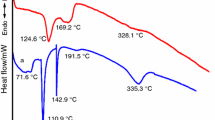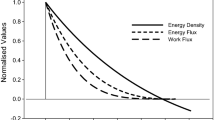Abstract
Experiments on an explosion of a fuel-air explosive (FAE) are carried out in open field, and comparative analyses between solid fuels, liquid-solid fuels of different recipes, and TNT of the same mass are applied. The results show that the effect of the FAE explosion at 3–6 m from the explosion center is definitely more pronounced than that of a TNT charge of the same mass, and solid fuels are more effective than liquid-solid fuels. A new formula for the peak pressure of the air shock wave is derived through an analysis of numerous experiments. The maximum value of the TNT equivalent for the fuels examined is found to be 5.35. The dispersive effect of mixed fuels in air is better than of TNT of the same mass; the flames last longer as well. High-speed photography indicates that the lasting time of fireballs of solid FAEs with suitable prescriptions are close to that of fuels consisting of solid and liquid component. The reason for non-synchronization of the time of reaching the highest pressure caused by the explosion of mixed fuels and the moment when the fireball reaches the maximum diameter is analyzed. The single ignition mechanism is discussed.
Similar content being viewed by others
References
Y. Wang and F. Ma, The Theory of New Conception Weapon, Enginery Industry Publ., Beijing (1997), pp. 485–488.
D. Gui, J. Liu, and Sh. Feng, “Research of power performance of several typical fuel air explosive,” Energ. Mater., 10, No. 3, 121–124 (2002).
J. Hui Junming, R. Liu, and G. Ge, “Study on increasing the power of FAE — selection of high energy fuels,” J. Nanjing Univ. Sci. Technol. (Nature Sci.), 19, No. 5, 472–476 (1995).
D. Gui, Sh. Feng, J. Liu, “The optimization selection of liquid fuels for high power FAE,” Chinese J. Expl. Propell. 25, No. 3, 14–16, 25 (2002).
M. A. Sadovskii, “Mechanical action of air shock waves of explosion, based on experimental data,” in: Collection of Scientific Papers in the Field of Explosion Physics [in Russian], Izd. Akad. Nauk SSSR, Moscow (1952), No. 1.
H. L. Brode, “Blast wave from a spherical charge,” Phys. Fluids 2, 217–229 (1959).
Explosive and Its Effect [in Chinese], The Eighth Department of Beijing Industry Institute, National Defense Industry Publ. Company (1979), pp. 259–260.
D. Wang, Zh. Shen, et al., “Experimental study on single ignition of solid and liquid FAE,” Expl. Shock Waves, 24, No. 5, 391–395 (2004).
H. Zhao, Principles of Gas and Dust Explosion, Beijing Inst. of Technology Press, Beijing (1996), pp. 48–56.
Author information
Authors and Affiliations
Corresponding author
Additional information
__________
Translated from Fizika Goreniya i Vzryva, Vol. 44, No. 1, pp. 101–105, March–April, 2008.
Rights and permissions
About this article
Cite this article
Liu, G., Hou, F., Cao, B. et al. Experimental study of fuel-air explosive. Combust Explos Shock Waves 44, 213–217 (2008). https://doi.org/10.1007/s10573-008-0028-7
Received:
Revised:
Issue Date:
DOI: https://doi.org/10.1007/s10573-008-0028-7




